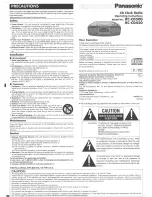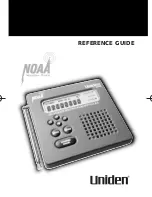
About the Radio | 45
Aprisa SR+ User Manual 1.11.1
Network Address Translation (NAT) Router
The NAT functions are only available in Advanced Gateway Router Mode (AGRM) or Advanced Router Mode
(ARM). Configuring NAT on the standard router modes will raise a ‘configuration not supported’ alarm.
The current implementation of One-to-One NAT and Port Forwarding NAPT supports network configurations
of AGRM / ARM mode, such as AGRM / ARM
–
Bridge (or mix of Bridge and AGRM / ARM), Bridge - AGRM /
ARM, Bridge - Mix [AGRM / ARM and Bridge] and AGRM / ARM
–
AGRM / ARM networks (where in AGRM /
ARM
–
AGRM /ARM network, either base station or remote radios can be NAT enabled, not both). It is
recommended reading the section about AGRM / ARM above before reading this section. The NAT is enabled
in IP > NAT
Network Address Translation (NAT) is a method of remapping external (public) IP addresses into other
local/internal (private) IP addresses and vice versa; providing transparent routing to end users/hosts via the
AGRM / ARM router.
In One-to-One NAT, IP addresses in the IP address space are mapped (translated) from external / public
interface IP address into other local / private interface IP address space (and vice-versa) via the AGRM /
ARM router, where One-to-One IP addresses are translated (including recalculating affected fields of the
header, like IP header checksum or higher-level checksum).
The advantage of NAT is to allow preservation of the multiple local (private) IP addresses, even if the
external (public) IP addresses change. Another advantage is the security function of NAT where private /
internal IP addresses are ‘
hid
den’
from the external / public IP domain behind the NAT. Also, private /
internal IP addresses can be reused in different NAT routers in the radio network.
In order to easily explain the NAT function, the following terminology is used:
•
Session
–
an IP / TCP / UDP service (identified by IP address and/or TCP / UDP port (or ICMP query
ID))
•
Public (external) / Private (internal / local) IP domain
–
the public / external and private / local
IP network domains is used to define the NAT gating function and the inbound and outbound session
NAT translation process based on NAT Address Map Table (AMP). The external / local notations used
for IP address and TCP / UDP ports are as follow:
▪
Eth: eIP:ePort
–
represents the external domain Ethernet port, IP address and TCP/UDP port.
▪
Eth: iIP:iPort
–
represents the internal/local domain Ethernet port, IP address and TCP/UDP
port.
•
Inbound / Outbound
–
session originating from external to local network domain will be considered
as inbound session. Session originating from internal / local to external network domain will be
considered as outbound traffic. Outbound session only may for example represent report by
exception. Inbound and Outbound session may for example represent poll / response.
Summary of Contents for Aprisa SR+
Page 1: ...January 2021 Version 1 11 1b ...
Page 2: ......
Page 10: ......
Page 72: ......
Page 86: ......
















































